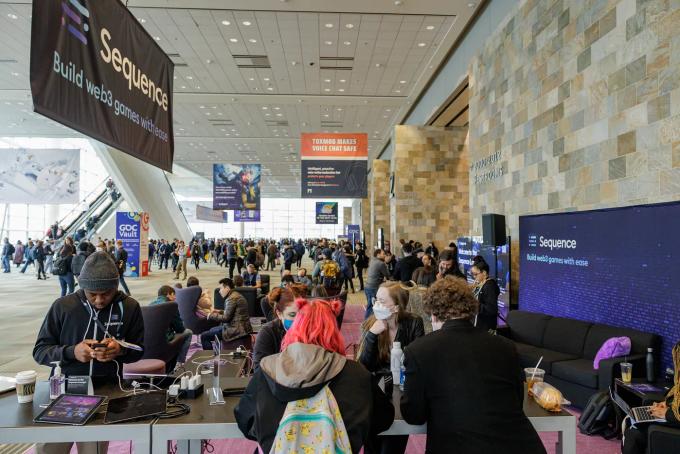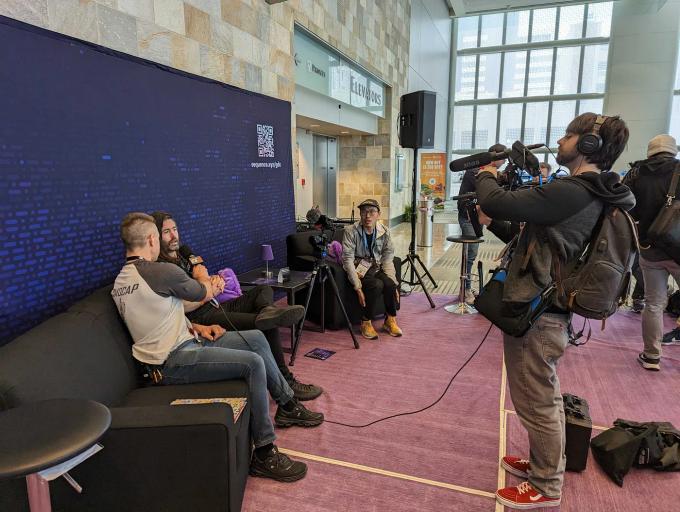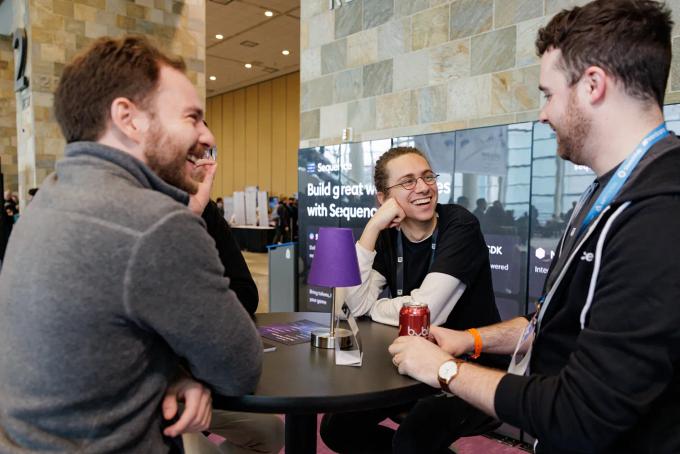The six biggest web3 gaming trends we learned at GDC
April 6 2023

Another GDC has come and gone and what an absolute blast it was to be surrounded by some of the smartest and most exciting people in the game development industry!
This was a special year at the Game Developers Conference, and not just because it attracted over 28,000 attendees. GDC held its first-ever Web3 Forum — a focused track for web3 developers, builders, and gamers to hone their craft. Naturally, Sequence was the platinum sponsor of the Web3 Forum.
We had the privilege of speaking with a TON of people throughout the entire conference. From independent game developers to some of the largest AAA studios in the world. From passionate web3 gamers to skeptics. From existing Sequence users to future Sequence users. After all of those conversations, we want to share six key takeaways about web3 gaming.
1 - There are a lot of web3 games in development
At Sequence we’re lucky to get early peeks at the games our community members are building, so we’ve always known there are a lot of great web3 games on the go. But then we started talking to creators at GDC, and guess what…there are A LOT of web3 games in development.
Nearly every developer we spoke with — from indie to AAA studio — had at least one web3 game on the go. The games ran the gamut of genres, from casual to FPS to puzzle to RPG to racing to sports. It was exciting for us here at Sequence because it meant we were able to meet, help, and begin partnering with a ton of exciting projects that we can’t wait to launch.
A lot of this comes down to technology. The first generation of web3 games were focused on the technology, not the gaming. Now that the technology has advanced — and with platforms like Sequence around to support developers — the next generation of web3 builders are laser-focused on creating compelling gameplay experiences.
Get ready, there’s a tsunami of groundbreaking web3 games coming sooner than you think!
2 - Among gamers, there still isn’t a broad understanding of what web3 is
One of the most common questions we got at GDC was “ok, but what is web3?” And honestly? Fair!
The ongoing transition from web2 to web3, like any major paradigm shift, has been iterative and rocky. As a community, we’ve prioritized technical enhancements over clear and consistent outward communication.
As we start to welcome more people into the world of web3 through experiences like gaming, we have two paths forward. Either we can align on clear and consistent terminology and work to build an understanding among the general public, or we can work to abstract away the underlying technological concepts so people can enter web3 without being consciously aware of it.
Whichever way we coalesce around, it’s clear that the concept of web3 isn’t fully understood among the general public and it’s incumbent on us as early leaders in the space to help solve that.
3 - More creators are embracing web2-friendly terminology
Related to the point above, we’re seeing more and more creators moving towards more player-friendly terminology for their games and experiences.
Leveraging terms like “digital collectibles” or “special items” instead of “NFTs” is the most prominent example of this. ”We find ‘collectibles’ or ‘avatars’ is what resonates with people,” said Adam Hannigan, CEO of Sunflower Land, and many other game developers shared similar sentiments.
And it makes sense. Familiar terms are more accessible, they reduce the player’s cognitive load, and they prevent the potential of alienating someone who doesn’t like NFTs. In a traditional web2 game, you don’t call an item by its underlying technology. Instead, we call it an item, or a prize, cosmetic, sword, or a million other things that describe the function versus the tech. It’s exciting to see the majority of new web3 games following suit.
4 - India is poised to become a massive influencer in web3 gaming
While the web3 gaming movement is truly global, India is quietly becoming a major hub for innovation. We spoke with a bunch of Indian game developers who are either working on web3 game experiences right now or are about to start.
A company at the forefront of this is SuperGaming, who you may already know for their mobile games. They’re also the brains behind the web3 games Tower Conquest: Metaverse Edition (TC:ME) and the upcoming title Indus.
SuperGaming has spent a lot of time focusing on the player experience, both in terms of the gameplay itself but also the meta-game. In TC:ME, for example, they inverted the traditional play-to-earn model seen in the first generation of web3 games. Instead of old players relying on a constant influx of new players to extract value from, old players actually incentivize new players to join, promoting a more sustainable economy where significant value can remain within the ecosystem. Plus, they’re investing heavily in the tournament space, giving their players even more ways to participate and contribute to the community.
Expect to see many more exciting web3 projects, not just from Super Gaming, but from game studios across India!
5 - AI and web3 are colliding in groundbreaking ways
The only new technology that got nearly as much attention as web3 at GDC was AI. There was a ton of chatter about how games of all sizes can take advantage of AI, but what really struck us as interesting were the folks marrying AI with web3 technologies.
We spoke with a number of builders playing in this space, looking at everything from AI-generated collectible artwork to leveraging AI to power character creation. It was the team building Proto that really blew our minds.
We spoke with Trey Smith and Kyle Klemmer, the team behind the web3 game Mech. Similar to us here at Sequence, they were building a web3 game and realized they needed tooling to make it happen, and are now bringing that tooling to other developers.
Trey discussed the tool they are building: “Proto is an AI game engine, where you can create complete worlds, prompt based. So you type it in, boom, Proto builds it out. You can do any type of game you want, you just type it in and do it.”
Just like web3 is going to fundamentally alter the gaming landscape, AI is poised to do the same, and it’s exciting to see teams of really smart people already combining the two.
6 - Gamers are excited about the ability to have real ownership over their accomplishments
This is the biggest takeaway from GDC: every gamer and developer we spoke with talked about their excitement around being able to have actual ownership over their gaming accomplishments.
A recent survey from Unity showed that nearly two-thirds of players are interested in games that give them ownership over their game items, 51% said they would play longer if they owned the things they were being awarded, and 55% said they want to be able to trade their assets This sentiment was echoed over, and over, and over (and over and over and over) at GDC.
We spoke with Mary Sorrenti, VP of Operations & Finance at Game Pill, who discussed her team’s perspective on why they jumped into web3 gaming. “What excited us was the ability to reward players for putting in time, energy and skills into games.”
Gamers want to see tangible results from their efforts — it’s why trophies and achievements are such a big part of modern gaming. But, they don’t want all their hard work and accomplishments to disappear if a game decides to shut down. At the same time, game developers want to build engaged communities of players who are just as passionate and invested in their game as they are. Web3 technologies enable the experiences that make both of these goals possible.
GDC was revitalizing. It was incredible to meet so many talented, passionate, and creative game designers who are all pushing toward a more equitable and rewarding gaming future. Here at Sequence, we’re so excited to be a part of the web3 revolution that is well underway, and GDC truly reinforced that.
Are you working on a game and do you want to incorporate web3 components into it? Sequence can help you out. Check out our player-friendly smart wallet and developer stack — it makes building web3 experiences a breeze.
Sequence makes building onchain simple. Developers and teams can launch, grow, and monetize apps with unified wallets, 1-click cross-chain transactions, and real-time data, all in a modular and secure stack. No more stitching together fragmented tools or battling poor user flows. Sequence is production-ready infrastructure that helps teams ship faster, onboard more users, and scale confidently. From chains and stablecoins to DeFi and gaming, Sequence powers developers and applications across the EVM ecosystem with billions in transaction volume and millions of users. Trusted by leaders in blockchain, Sequence powers today’s onchain apps and delivers future-proof infrastructure for tomorrow’s breakthroughs. Learn more at sequence.xyz.
Written by

Robert Guenette
Product Marketing DirectorRelated Posts

A short guide that explains exactly what gasless transactions are, and why they matter for your web3 experience.
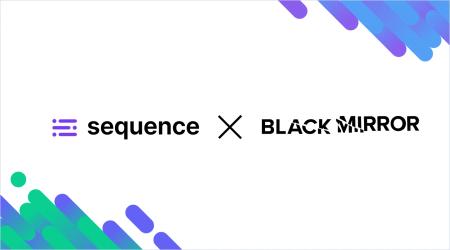
In partnership with KOR Protocol, Sequence and Msquared, Black Mirror's franchise has launched the $MIRROR token and a new web3 experience!
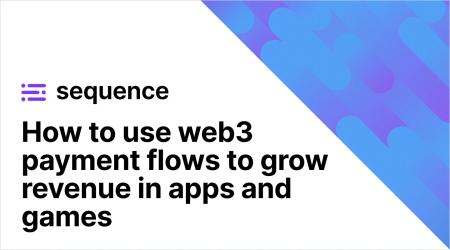
Web3 payment flows allow any app to embed onchain purchases and interactions in a way that feels natural for users. Learn more about them!

As more applications and protocols move onchain, indexers redefine how dev teams access, organize, and use blockchain data. Learn how!

